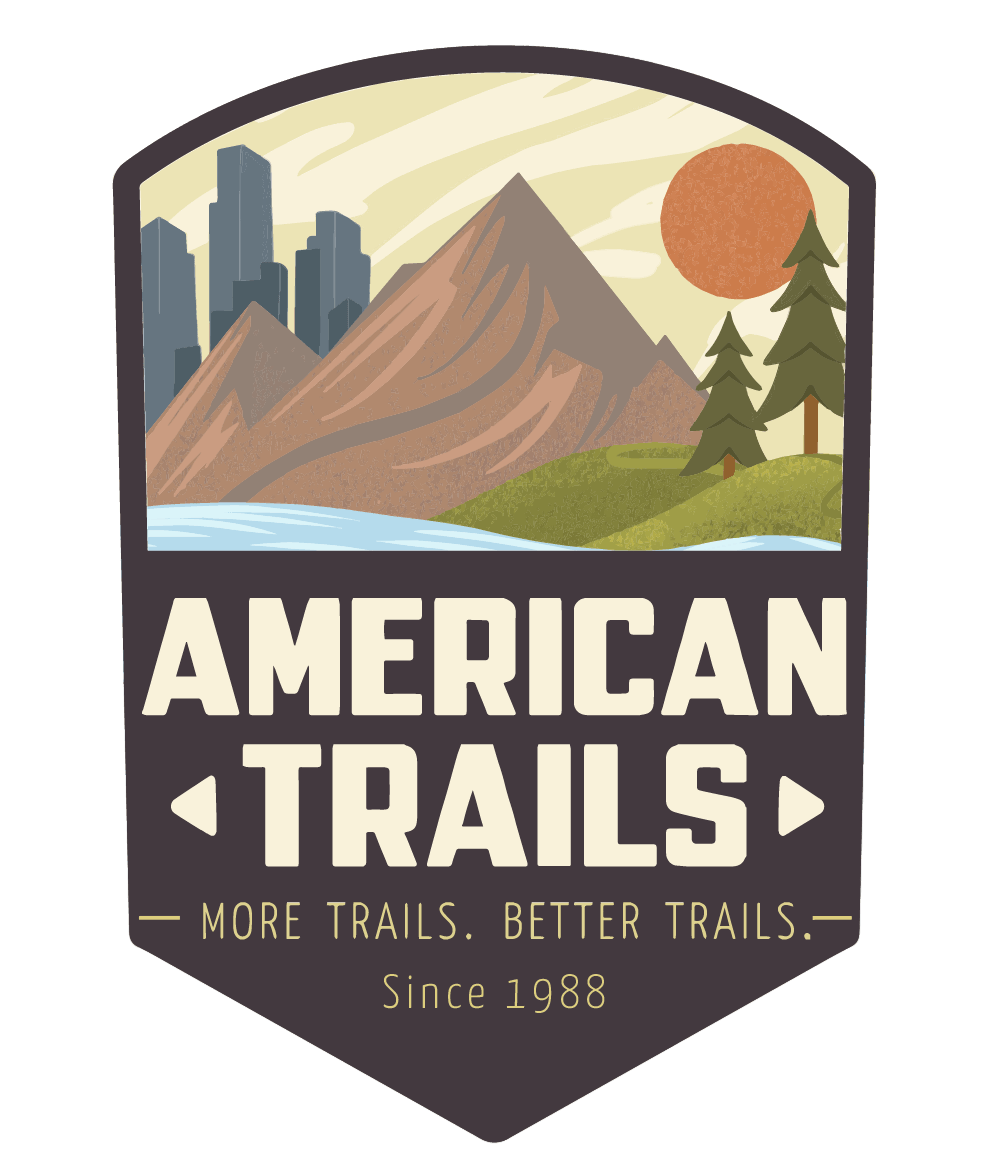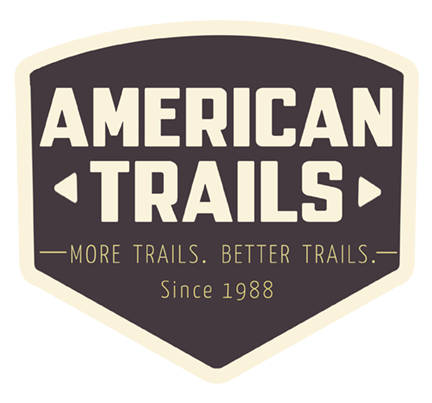




On March 15, 2011, new Department of Justice rules took effect, specifying the “other power-driven mobility devices” (OPDMD) that could be used on trails by “individuals with mobility disabilities.” If you manage a trail that is open to the public this rule applies to your facility.
by Stuart Macdonald, Trail Consultant, American Trails
On March 15, 2011 the Department of Justice (DOJ) revised rules went into effect allowing “other power-driven mobility devices” to be used by “individuals with mobility disabilities.”
This DOJ ruling applies to any place, indoors or outdoors, that is open to the public.
Under the American with Disabilities Act (ADA) Title II this DOJ rule applies to trails on State or local government lands. Also under the ADA Title III it applies to other “public accommodations” that would include trails open to the public on privately or commercially managed lands. Federal agency managed lands are not directly covered under the ADA, however this rule sets legal precedents the Federal agencies must watch. So the Federal agencies are also reviewing their policies, procedures, and the way in which trails on the land base they manage have been assessed.
An “other power-driven mobility device” (OPDMD) is defined in the rules as: "any mobility device powered by batteries, fuel, or other engines— whether or not designed primarily for use by individuals with mobility disabilities— that is used by individuals with mobility disabilities for the purpose of locomotion, including golf cars, electronic personal assistance mobility devices (EPAMDs), such as the Segway® PT, or any mobility device designed to operate in areas without defined pedestrian routes, but that is not a wheelchair within the meaning of this section. This definition does not apply to Federal wilderness areas; wheelchairs in such areas are defined in section 508(c)(2) of the ADA, 42 U.S.C. 12207(c)(2).
In short an other power-driven mobility device is anything with a motor that can be driven, regardless of size or horsepower, if it is driven by a person who has a mobility related disability.
Any device that meets the following DOJ definition of a wheelchair is not an other power-driven mobility device and must be allowed to be used anywhere, with no exceptions.
A wheelchair is: a manually-operated or power-driven device designed primarily for use by an individual with a mobility disability for the main purpose of indoor or of both indoor and outdoor locomotion. This definition does not apply to Federal wilderness areas; wheelchairs in such areas are defined in section 508(c)(2) of the ADA, 42 U.S.C. 12207(c)(2).
Despite the DOJ ADA rules, the U.S. Forest Service wheelchair definition, regulations and policies remain in place and continue to apply to all on the U.S. Forest Service managed lands.
The DOJ rules say anyone who has a mobility disability. A person using an other power-driven mobility device may be asked to provide a “credible assurance” that the mobility device is required because of the person's disability. That credible assurance can be showing a valid, State-issued, disability parking placard or card, or other State-issued proof of disability, or if the person doesn’t have any of those with them, they may simply say that the other power-driven mobility device is being used for a mobility disability. A person may not be asked if they have a disability or anything about their disability.
Only 8 million people who have mobility limitations use wheelchairs, canes, crutches, etc. Close to 20 million people have a mobility related disability but don’t use wheelchairs, canes, and so forth. However, they still have mobility disabilities that limit the distance they can walk due to heart or breathing disorders, amputations, joint or muscle related disabilities, and the list goes on. Keep in mind that 85% of all disabilities aren’t obvious.
The DOJ rules requires an entity open to the public to make reasonable modifications in its policies, practices, or procedures to allow the use of other power-driven mobility devices by individuals with mobility disabilities, UNLESS: that entity can document that it has completed an assessment of the facility, trail, route or area, before the person requesting use of the device arrived onsite, and the entity found that class of other power-driven mobility device could not be used in that location due to one or more of the following DOJ assessment factors:
DOJ Assessment Factors:
(a) “The type, size, weight, dimensions, and speed of the device;
(b) The volume of pedestrian traffic (which may vary at different times of the day, week, month, or year);
(c) The design and operational characteristics (e.g., whether its service, program, or activity is conducted indoors, its square footage, the density and placement of stationary devices, and the availability of storage for the device, if requested by the user);
(d) Whether legitimate safety requirements can be established to permit the safe operation of the other power-driven mobility device in the specific facility; and
(e) Whether the use of the other power-driven mobility device creates a substantial risk of serious harm to the immediate environment or natural or cultural resources, or poses a conflict with Federal land management laws and regulations.”
If one of those issues prevents the use of a specific calls of other power-driven mobility device
Those are the only factors a public entity is to use in determining whether a particular class of other power-driven mobility device may be allowed in a specific location.
Policies and public notice:
DOJ rule states: “A public entity that has determined that reasonable modifications can be made in its policies, practices, or procedures to allow the use of other power-driven mobility devices should develop a policy that clearly states the circumstances under which the use of other power-driven mobility devices by individuals with a mobility disability will be permitted. It also should include clear, concise statements of specific rules governing the operation of such devices. Finally, the public entity should endeavor to provide individuals with disabilities who use other power-driven mobility devices with advanced notice of its policy regarding the use of such devices and what rules apply to the operation of these devices.”
The DOJ rules regarding other power-driven mobility devices, are a portion of the revisions to the ADA Title II and Title III finalized by DOJ on 9/15/2010.
We wish to thank Janet Zeller, U.S. Forest Service National Accessibility Program Manager, ([email protected]) for providing this information on the new DOJ rule.
Attached document published March 2011
FAQ: Apps for Trail Management and Volunteers
posted May 19, 2021
Information on apps that can be used for trail management that would be suitable for volunteer-type organizations.
posted Dec 22, 2020
This study aimed to compare conventional mountain bike and eMTB use. This was done by investigating 2 questions: (1) What proportion of exercise response is retained for an experienced mountain biker while using an eMTB when compared with a conventional mountain bike? and (2) What are the perceptions and beliefs of experienced mountain bikers toward eMTBs both before and after riding an eMTB?
Perceptions of Conflict Surrounding Future E-Bike Use on the Arizona Trail
posted Oct 27, 2020
On average, the majority of survey respondents disapprove of e-bikes being allowed on the trail. This remains true across the board for each of the major user groups; however, mountain bike rider respondents are less likely to disapprove of allowing e-bikes on non-motorized trails and equestrian respondents are more likely to disapprove.
Trail Use and Management of Electric Mountain Bikes: Land Manager Survey Results
posted Aug 13, 2020
In order to better guide research into the range of potential social and environmental impacts and benefits related to the use of eMTBs on natural surface trails, IMBA and the BPSA are interested in what questions land managers have regarding this new use. The survey explicitly targeted land managers’ experiences and concerns regarding eMTB use on natural surface and/or singletrack trails – not paths or bikeways – although some land managers are responsible for both types of trail infrastructure.
5,466 views • posted 03/31/2018